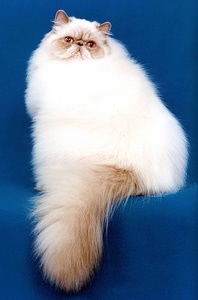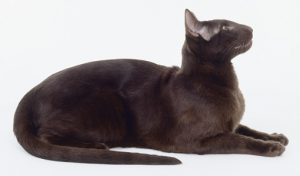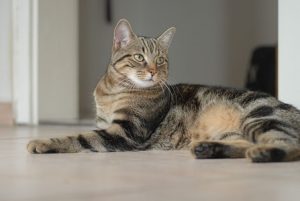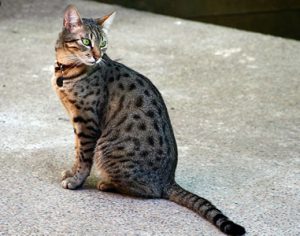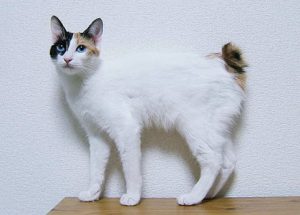
The Japanese Bobtail is a breed of cat with an unusual ‘bobbed’ tail more closely resembling the tail of a rabbit than that of an ordinary feline. The short tail is a cat body type genetic mutation caused by the expression of a recessive gene. Thus, so long as both parents are bobtails, all kittens born to a litter will have bobtails as well.
The Japanese Bobtail is a small domestic cat native to Japan and Southeast Asia, though it is now found throughout the world. The breed has been known in Japan for centuries, and there are many stories, as well as pieces of ancient art, featuring it.
Japanese bobtails may have almost any colour, but calicoes, are especially favoured by the Japanese. Much like any other breed, the colours may be arranged in any number of patterns, with van patterns and calico being common among purebred cats, though other coloration’s are also accepted.
Legend and lore
As in cultures around the world, cats feature prominently in Japanese folklore. As in other traditions, cats are frequently objects of fear and mistrust, with numerous supernatural abilities ascribed to them. In some such stories, the length of their tails is an important plot point.
One legend tells of a sleeping cat whose long tail caught fire–it then ran through town, spreading flames everywhere. With the capital in ashes, the Emperor decreed all cats should have their tails cut short as a preventative measure.
Long-tailed cats may further come under suspicion of becoming a kind of bakemono (ghost or goblin) called nekomata, a cat who after a certain period of time grows a double tail, and gains the ability to walk around on its hind legs, shapeshift, and enchant human beings, much like the magical kitsune (fox). (The cat, kitsune, and more good-natured tanuki are the three main shapeshifters of Japanese lore.)
Bakeneko sometimes loyally serve their masters and mistresses–even protecting them from beyond the grave–but are more usually menacing, even murderous creatures, as in the story of the “Vampire Cat of Nabeshima”, (related by Mitford in his Meiji era collection, Tales of Old Japan). The titular “vampire cat” is a nekomata who kills and impersonates a beloved spouse, then proceeds to drain the life of her lord and husband.
On the flip side, the auspicious maneki neko (literally, “inviting cat”Wink, a fixture in Japanese business places around the world, usually depicts a bob-tailed cat, typically of the calico colouring.
It’s possible legends and superstitions may have favoured the short-tailed breed at one time or another, but it seems likely the bobtail simply has a longer history than other breeds in Japan. It is also likely to have carried much prestige, having originated on the continent and arrived via Korea in the sixth century, along with other prized articles of Chinese culture.
—————————————————————————————————————–
CARING FOR YOUR CAT NEWSLETTER – Delivered Directly To Your Inbox – Starting Immediately – SIGN UP FOR FREE TODAY
—————————————————————————————————————–

